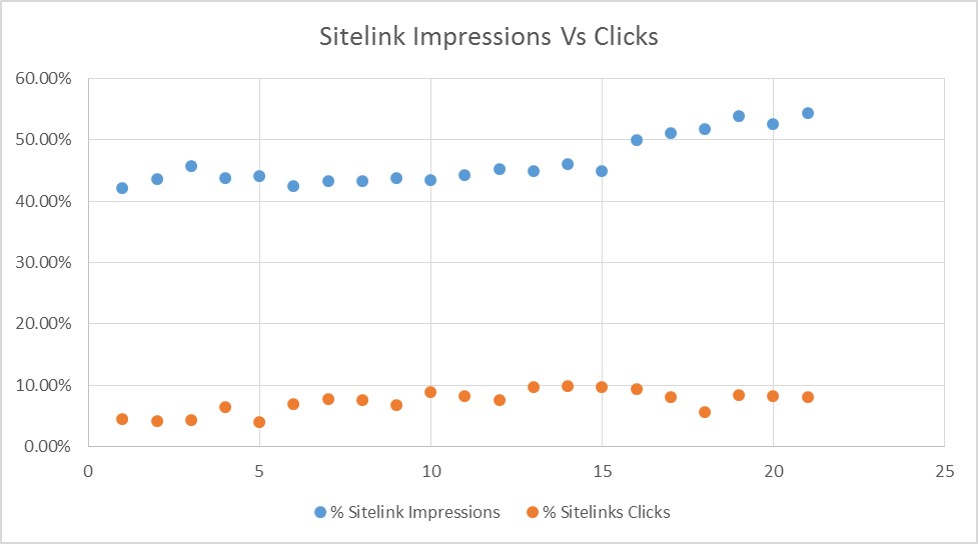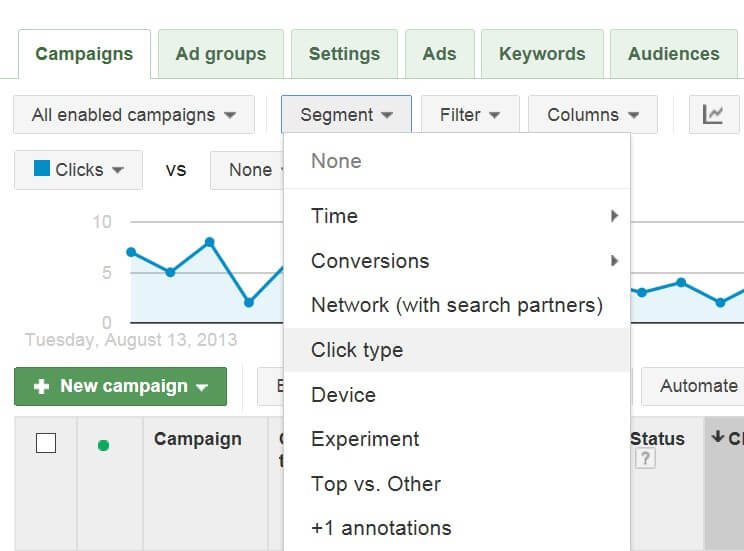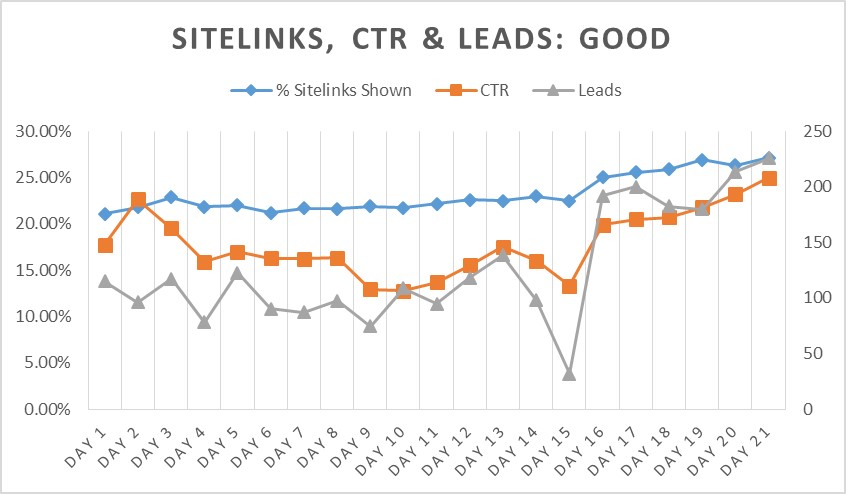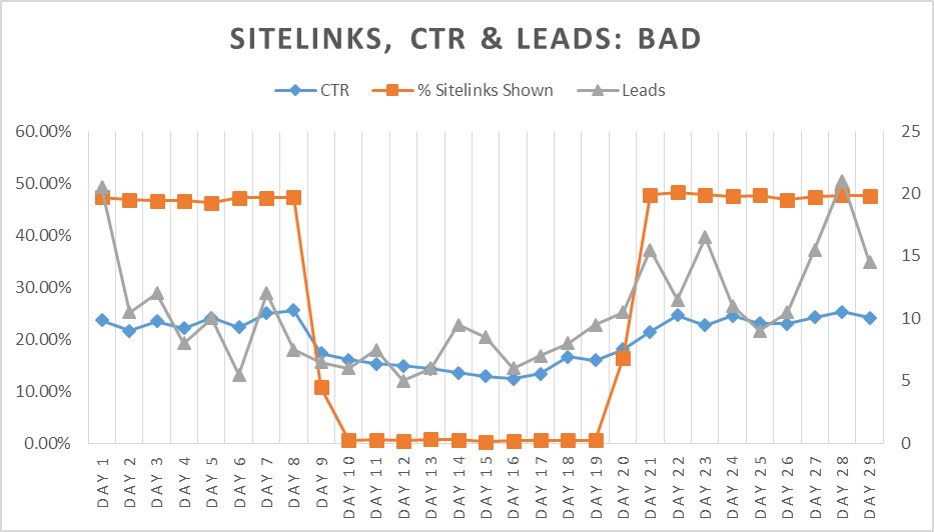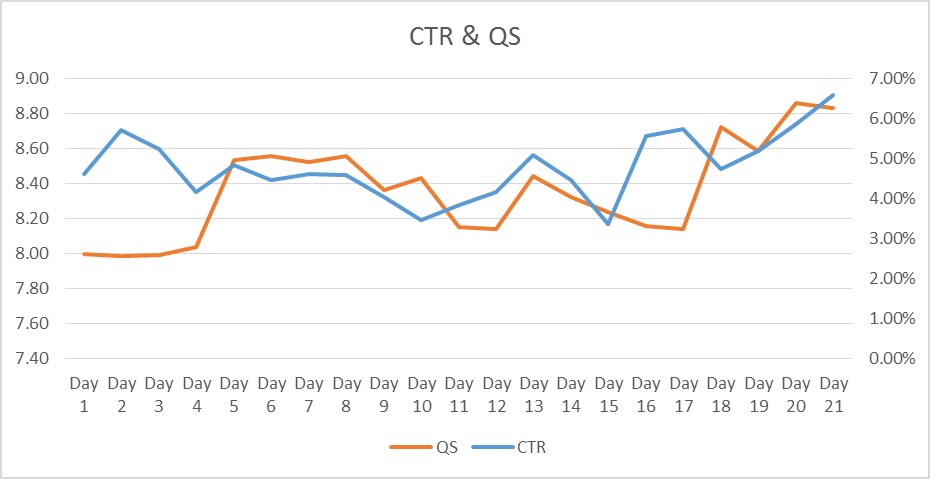A few years ago, I was interviewing for a search engine marketing/paid media position and the interviewer (who happens to be an SEM guru of sorts) asked me what my favourite Google innovation was. “Sitelinks,” I answered very quickly (they were new at the time). He nodded and asked the highest increase in CTR I had seen with the addition of sitelinks. I responded by saying I had seen as high as 60% in some cases. At the end of the interview, given the opportunity to ask questions, I asked him what his favourite new AdWords feature was and he said Sitelinks also. I remember thinking pretty highly of myself in that moment, because I had I just discovered that I had the same favourite nerdy PPC game changer as someone I really looked up to.
Now what’s interesting here is that we’ve all been well aware of how effective sitelinks are in expanding ad units, causing them to take up more real estate on the SERP and increasing CTR, but the sheer magnitude of their potential impact on results never really dawned on me until recently. I’d like to share a few things I’ve learned about sitelinks over the past few months.
It’s not clicks on the sitelinks that matter. It just matters that they’re there.
After reading this far, you may be surprised to learn that my experience tells me searchers don’t actually click on sitelinks that much. In the 21 day test shown in the graph below, you can see that the percentage of ads shown with sitelinks starts to spike around day 16, but the actual clicks on the sitelinks don’t increase significantly. For paid search marketers, this means two things. First, the actual clicks on the sitelinks is not what helps drive results. It’s the larger ad unit taking up more real estate on the SERP, capturing the attention of more searchers and pushing competitors down. Second, don’t get too concerned about driving people to parts of your site that maybe aren’t as related to the search and thus perhaps not as likely to convert. The overwhelming majority won’t go there anyway.
How to determine what percentage of your ads are shown with sitelinks.
This is a quick and easy, not too well known, trick in the AdWords interface.
In any of the major tabs (campaigns, ad groups, ads, keywords), click on the segment button and select click type. Once you download the segmented report (or view it in the UI), all your metrics will be shown for any extensions that apply to that keyword/ad group/ad, etc.
So to calculate how many ads showed with sitelinks, take the total impressions for headline which is all ads and divide by the total for sitelinks. For clicks, add all the clicks together i.e. headline + all extensions and divide by the number of clicks for sitelinks.
You cannot cheat the system with duplicate sitelink URLs anymore.
The Google sitelink policy has been around for some time and it states:
“Each sitelink must point to different content: We don’t allow two or more sitelinks in the same campaign or ad group to point to the same landing page or the same content. We also don’t allow sitelinks that direct to the same landing page as the ad’s destination URL”
For a while, it was pretty easy to get away with using duplicate URLs for sitelinks, especially when driving to a form or promo page with no other destinations available. Unfortunately, this doesn’t work anymore. Accounts that have duplicate URLs for sitelinks now pretty consistently result in those sitelinks not serving at all. The bad part about this is that there’s no mechanism within the AdWords UI to inform you of this. That’s something important to keep in mind when building promo pages that you plan to advertise using paid search. There have to be unique URLs created in order to take advantage of sitelinks.
Also, spot-check your sitelinks often. At this time. There are no disapproval notifications being emailed to you like you’re used to for ads. So if your sitelinks are disapproved for policy violations such as excessive punctuation, you will only see the disapproval if you go to the sitelinks view in Adwords.
Sitelinks DO Drive Performance.
In the same 21 day test above, notice that the peaks and valleys in the trend lines for percentage of ads shown with sitelinks and CTR are almost identical. As the CTR increases, the number of leads from paid search increases as well. Although not shown in the graph below, cost per lead also goes down as a result.
In a different case (an inadvertent test if you will), watch what happened to the CTR and lead volume of this account when sitelinks got disapproved and stopped showing:
This is especially important for branded terms if you get a good chunk of your lead volume from them. Even a small drop in the percentage of ads shown with sitelinks will throw off CTR. Conversions will almost certainly suffer as a result.
What does this all mean?
When you increase the percentage of your ads shown with sitelinks, your drive up your CTR. This not only gets you more conversions, it also increases your quality score and reduces your overall costs. As shown above, the opposite happens when you remove sitelinks or decrease the percentage of your ads shown with them.
In case you’ve ever doubted how closely CTR and quality score are related, here are both metrics over the same 21 day period as above:
To keep track of your aggregate quality score, check out the blog post on AdWords scripts that I used. You can customise this to fit your own needs.
How can you improve the percentage of your ads shown with sitelinks?
This can be achieved quite easily. First, add sitelinks to your campaigns/ad groups if you don’t have any. If you do have sitelinks, to make them appear more frequently, simply make them more relevant. With the advent of enhanced campaigns, sitelinks now have their own quality score, so it’s important to ensure that they are highly relevant.
Take advantage of adding sitelinks at the ad group level. In the test above, shortly before the large spike I added granular sitelinks at the ad group level that included services corresponding to each ad group, as well as the location indicated by the user query. If you are a business with multiple locations, and you already have your campaigns/ad groups set up by location, this is an easy way to increase the relevance of your sitelinks.
Also, add description lines to your sitelinks. This will increase the size of your ad unit even further and you will likely benefit from an even better CTR.
As your ads begin to appear more relevant and your CTR and QS continue to increase, you will be able to pay less to maintain your current ad position, or appear in a higher position for the same CPC. This creates a ripple effect: you appear higher on the SERP, you increase CTR even more, your QS continues to go up, your lead volume increases, your costs you down, you are a happy PPC manager. Repeat as desired.
What kind of performance have you seen with your sitelinks? Have you run tests on the effects of other ad extensions? Share your experiences in the comments below.
Interested in improving your paid search strategy? Contact DAC today!
Adiela Aviram

